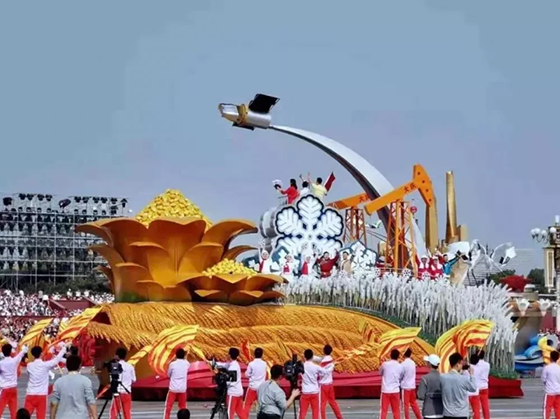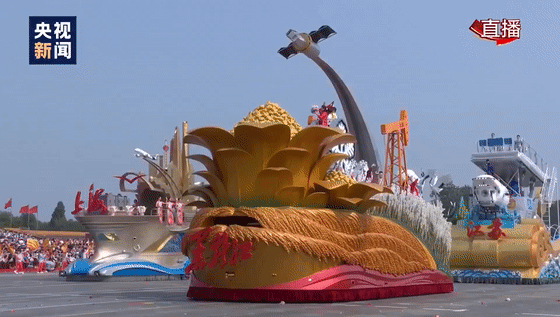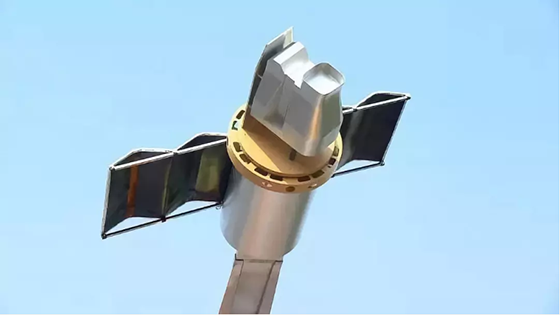Written by: Liang Yingshuang
Translated by: YANG Yue
Edited by: William Mosteller
Date: 10-16
On the morning of October 1, as an important part of the celebration of the 70th anniversary of the founding of the People's Republic of China, the mass parade with the theme of "Building the Chinese Dream Together" attracted people's attention. A total of 100,000 people and 70 floats passed through the central area of Tian'anmen from east to west along Chang'an Street to be inspected by the party, state leaders, and people. Do you know? The float of the China Grain Storehouse showing the revitalization of Heilongjiang also showcases HIT wisdom and elements.
The float consists of six systems, including art modeling, modular car body, car chassis, upper exhibits, monitoring system, and electrical system. The related technologies of the Aerospace College, the College of Mechanical and Electrical Engineering, and the Electrical College of HIT have been successfully applied in different systems.

On May 8, for the task of the leaders, the College of Mechanical and Electrical Engineering was deployed to refit, design, and provide technology. Zhao Hang, the Party Secretary of the college was responsible for overall deployment, arrangements, and the establishment of a float project team. Prof. Peng Gaoliang and Associate Prof. Xue Yuan of the ground special vehicle equipment research team were responsible for the floats overall design, modular body, and chassis modification design, as well as the interface design of each part; Associate Professor Zhao Lijun and Associate Professor Liu Yanwu of the Robotics Research Institute were responsible for the structural design of various artistic elements such as snow carving, granary, pumping unit, red-crowned crane, and so on. Professor Zhu Chunbo's team was responsible for the floats electrical control system design. Associate Professor Xue Yuan of the College of Mechanical and Electrical Engineering, followed the float to take charge of technical support and participated in the Heilongjiang mass procession that accompanied the float.

The float is characterized by its large structural size, large capacity, high safety factor, good transportability, and convenient loading and unloading. The highest point of the float is 10m from the ground, the width is more than 6m, the length is 15m, and the structural dimension of the float is much larger than that of a normal vehicle. The float is divided into 2 floors, which can accommodate 50 people. The float contains two generators and a double backup of power equipment. The float is made of square steel pipe, which is easy to process and has a high level of fire resistance, and its structure is optimized. The float adopts modular technology and U-shaped connection technology, which is convenient for rapid processing and loading and unloading, ensures the installation accuracy, structural strength, and reliability coefficient, and provides a technical guarantee for the development of the Heilongjiang float in a short period of time.
It is worth mentioning that among the floats on display was the "Kuaizhou I" satellite models independently developed by HIT. According to Li Hui of the Institute of Satellite Technology, Kuaizhou I, which successfully flew into space on September 25, 2013, is the third satellite developed by HIT and mainly used for various kinds of disaster and emergency monitoring and rescue and disaster relief information support.

HIT adheres to the plan of running the school based on space flight, serving national defense, and facing the main battlefield of the national economy. Nineteen satellites have been launched, including China's first small satellite independently developed by a university, the first nanosatellite independently designed, developed, and controlled by university students, and the first microsatellite in the world to independently complete the earth-moon transfer, near-lunar braking, and lunar orbiting.


